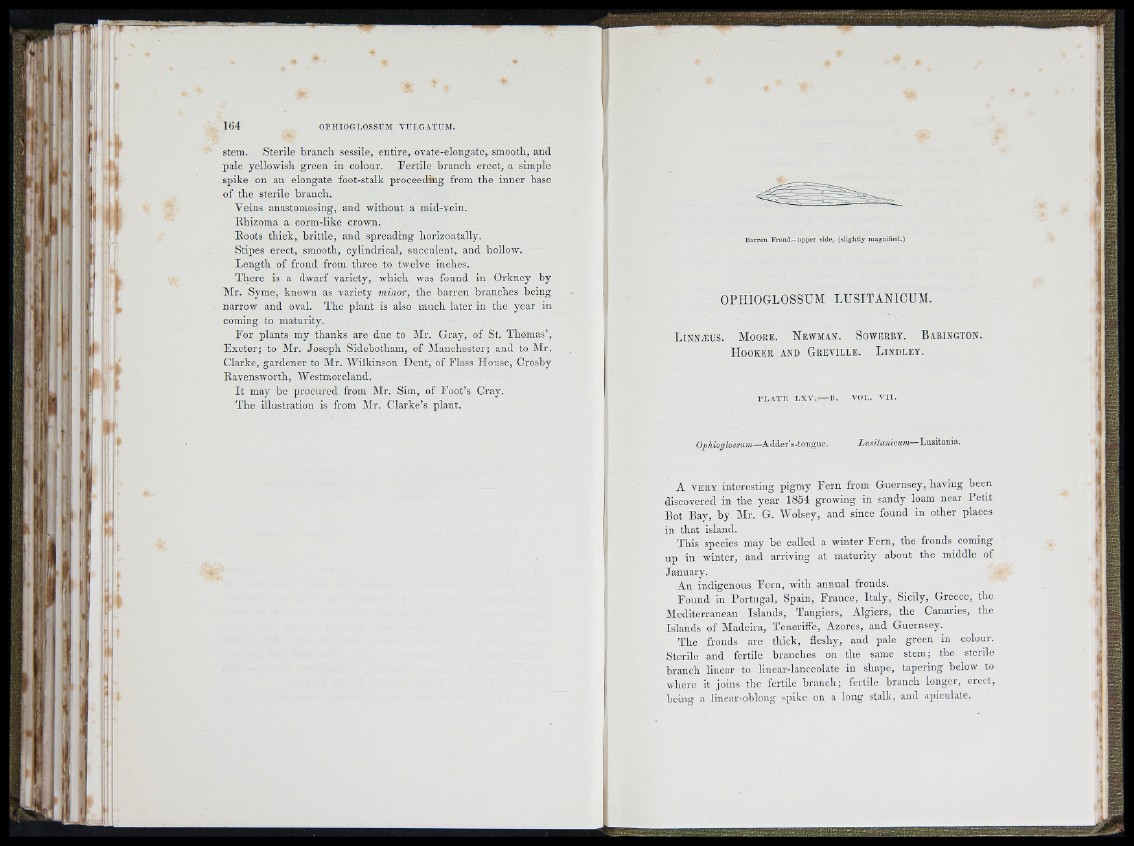
164
|M ¡11'
stem. Sterile hrancli sessile, entire, ovate-elongate, smooth, and
pale yellowish green iu colour. F e rtile branch erect, a simple
spike on an elongate foot-stalk proceeding from the inner base
of the sterile branch.
Veins anastomosing, and without a mid-vein.
Rhizoma a corm-like crown.
Roots thick, b rittle , and spreading horizontally.
Stijres erect, smooth, cylindrical, succulent, and hollow.
L en g th of frond from three to twelve inches.
There is a dwarf variety, which was found in Orkney by
Air. Syme, known as variety minor, the b arren branches being
narrow and oval. The plant is also much later in the year in
coming to maturity.
F o r plants my thanks are due to Air. Gray, of St. Thomas’,
E x e te r; to Air. Joseph Sidebotham, of Alanchester; and to Air.
Clarke, gardener to Air. AVilkinson Dent, of Elass House, Crosby
Ravensworth, Westmoreland.
I t may be procured from Air. Sim, of F o o t’s Cray.
The illustration is from Air. Clarke’s plant.
Barren Fro n d -u p p e r side, {slightly magnified.)
OPHIOGLOSSUM LUSITANICUAI.
LiNNiEUS. AIo o r e . N ew m a n . S ow e r b y . B a b in g t o n .
H o oker a n d G r e v il l e . B in d l e y .
P L A T E L X V . H
Ophioglossum—Adder’s-tongue. Lusitanicum— hxisii&ma.
A VERY interesting pigmy F e rn from Guernsey, having been
discovered in the year 1854 growing in sandy loam near P e tit
Bot Bay, by Air. G. Wolsey, and since found in other places
in th a t island.
This species may be called a winter F e rn , the fronds coming
up in winter, and arriving at maturity about the middle of
January.
An indigenous F e rn , with annual fronds.
F ound in P ortuga l, Spain, F rance, Ita ly , Sicily, Greece, the
Alediterranean Islands, Tangiers, Algiers, the Canaries, the
Islands of Aladeira, Teneriffc, Azores, and Guernsey.
'rh e fronds are thick, fleshy, and pale green in colour.
Sterile and fertile branches on the same stem; the sterile
branch linear to linear-lanceolate in shape, tapering below to
where it joins the fertile bran ch ; fertile branch longer, erect,
being a linear-oblong spike on a long stalk, and apiculatc.